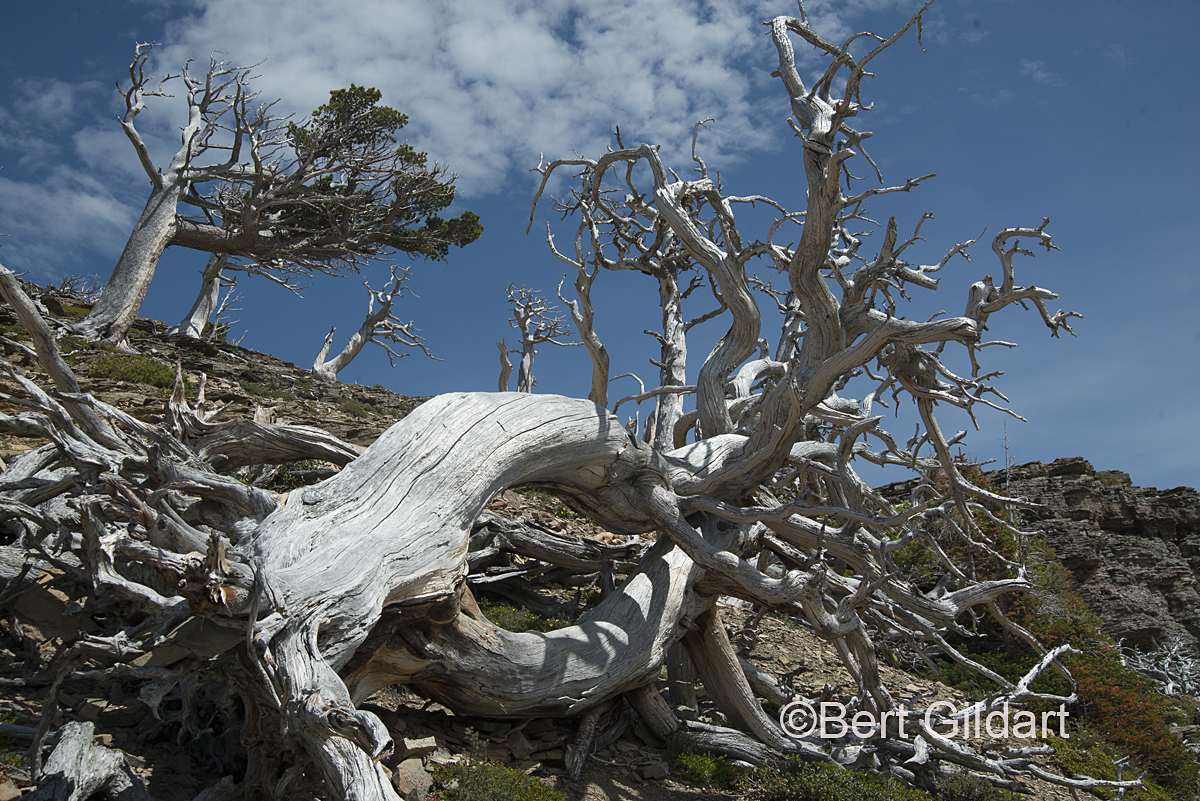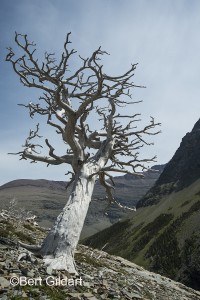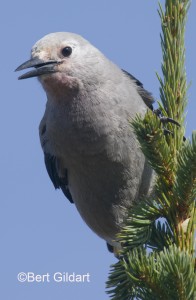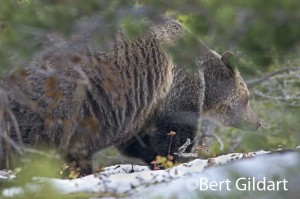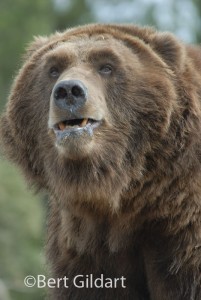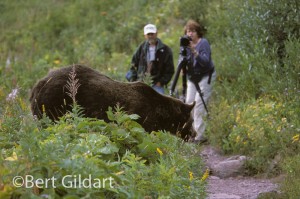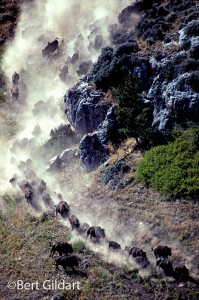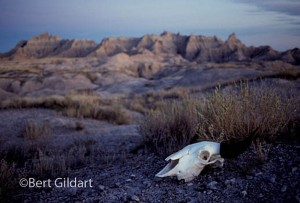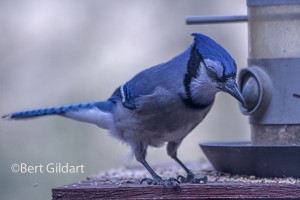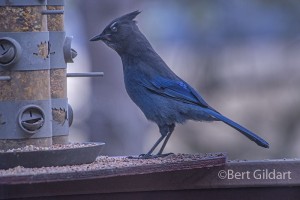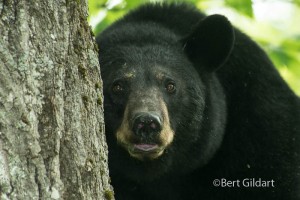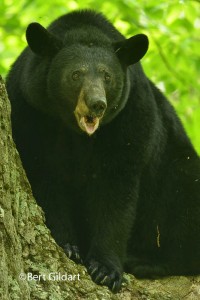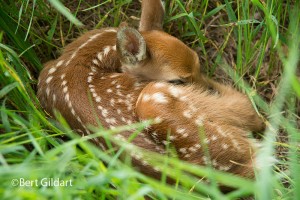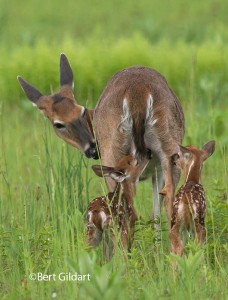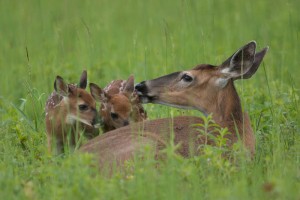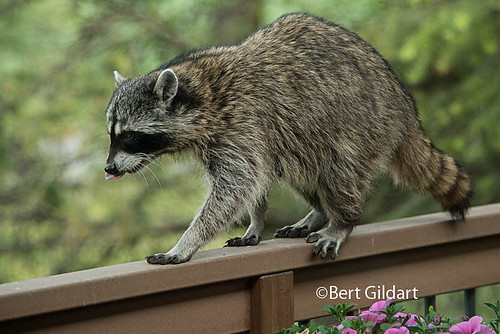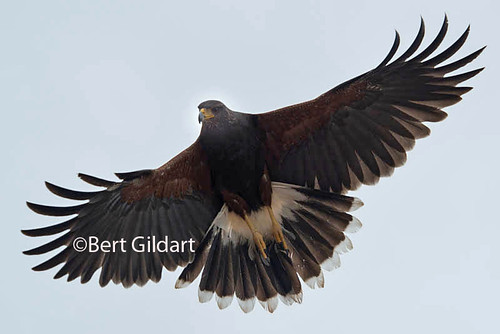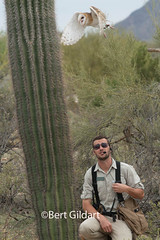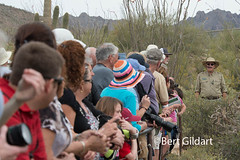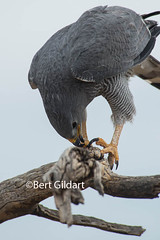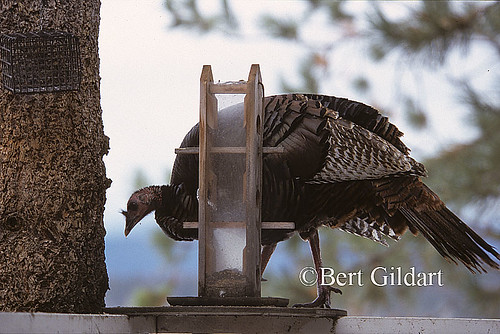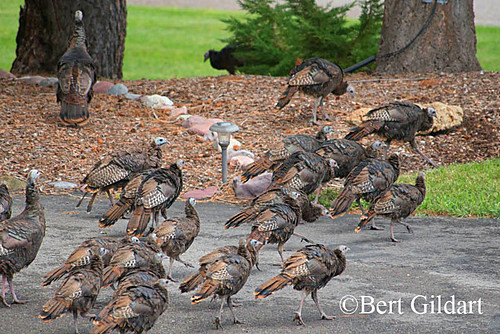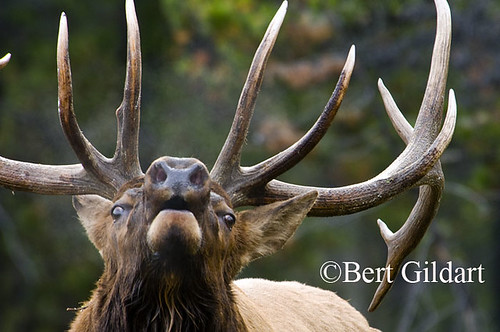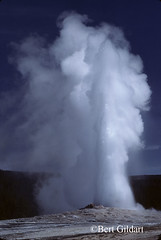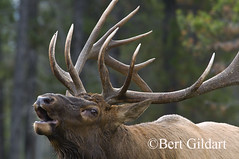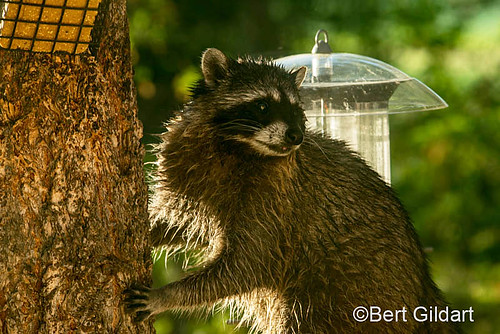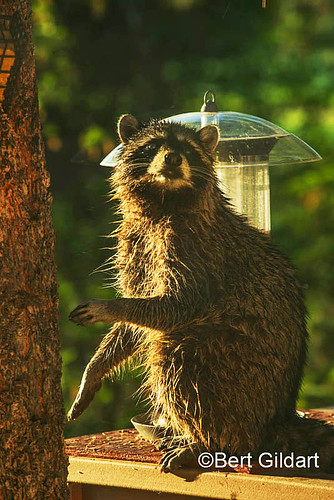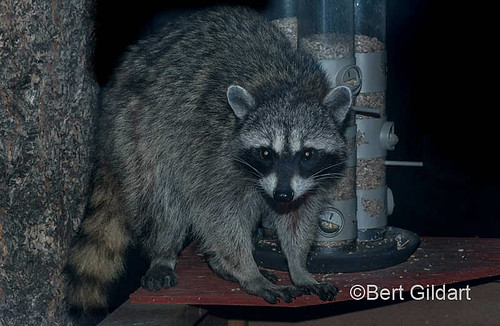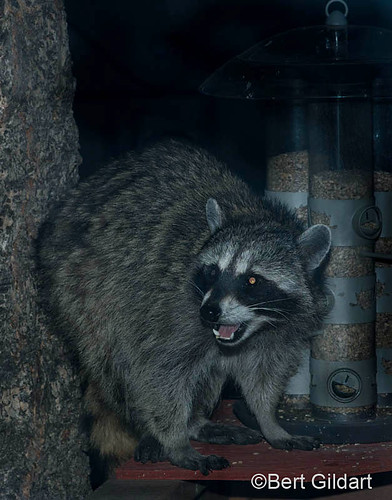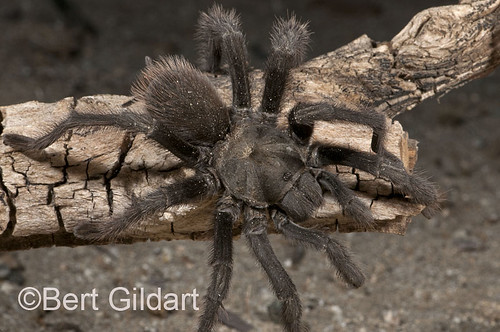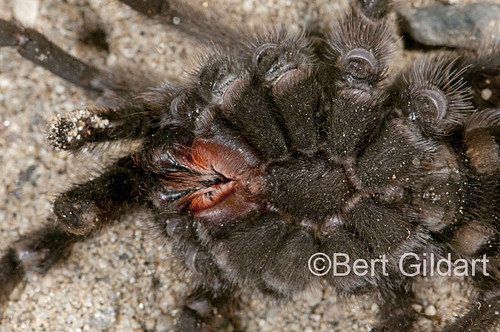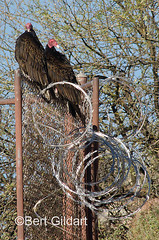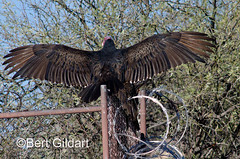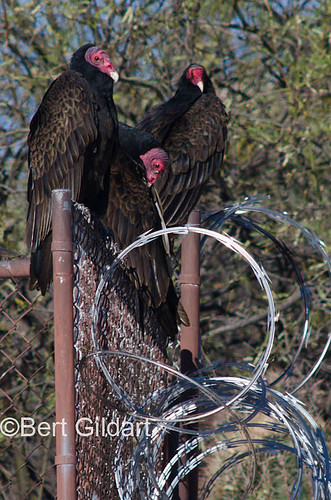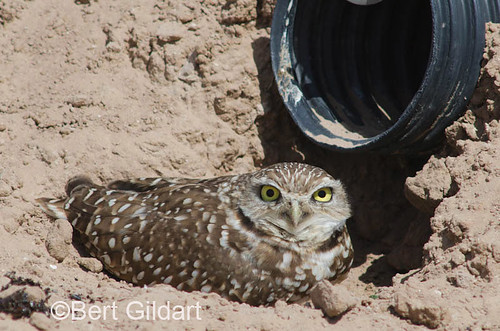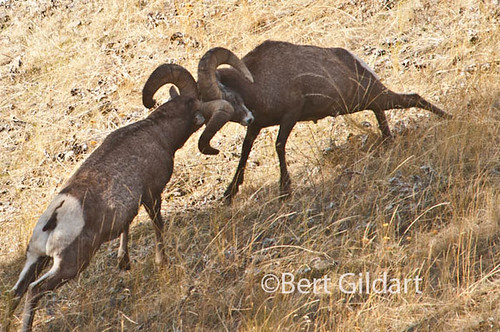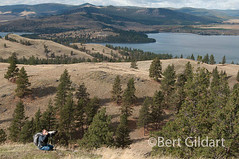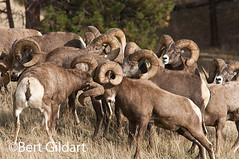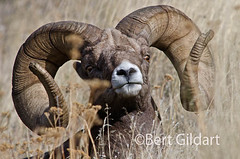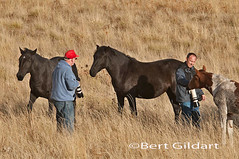Ghost Forest
posted: August 6th, 2018 | by:Bert
GHOST FOREST: Two weeks ago (about the 20th of July, 2018) Janie and I camped in Glacier National Park at the Two Medicine Campground. During that time I made a hike to Scenic Point and that was memorable.
But even more memorable was the “ghost forest,” through which I passed. Wraithlike trees have been flanking the trail for decades and were most likely killed by blister rust, an exotic disease brought over from England.
Limber pine tree killed by white pine blister rust. Age is dramatized by ravages of weather.
Significantly, my first job in Glacier (before I worked as a ranger) was on a park labor crew whose job description was to spray all five needle pines with a chemical thought to eradicate the spores that killed these trees. On the west side of the park’s Continental Divide these trees are called white pine, but on the east side, limber pine. Sadly our work was of little avail for blister rust has killed both species, hence the ghost forest.
Lone limber pine ravaged by both disease and weather; forest of ravaged limber pine; Clark’s nutcracker.
THERE IS HOPE, however, that the tree has mutated and that the park is beginning to see a species that is immune from the disease. In other words, there has evolved a tree that is “genetically–free” from the death knell caused from the blister rust spores. Not many of these trees yet exist, but in the meantime, I think the “ghost forest” does have an otherworldly appeal.
Interesting as this story might be there is yet another aspect. Cones from the two species make up an important component in the diet of grizzly bears, so the dispersal of cones is important not only for the resurrection of a healthy forest but also to a number of mammalian species such as the grizzly bear.
The “vector of dissemination” is the Clark Nutcracker, and a write up in an Audubon guide reports that the bird “harvests pine seeds in late summer and fall, carrying up to 90 at once in its throat pouch to bury them in soil on exposed slopes.” The report continues saying that a single bird may store 30,000 or more seeds in one season. The story is referring specifically, of course, to both of the five needle pines. Naturalists in Glacier tell me that bears can easily find these deposits.
I consider myself very lucky to have seen the Nutcracker perched on a limb near the porch of my house, and was able to record it using a tripod mounted 600mm lens.
———
TIME FIVE YEARS AGO:
4th ed. Autographed by the Authors
Hiking Shenandoah National Park
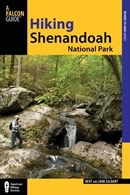 Hiking Shenandoah National Park is the 4th edition of a favorite guide book, created by Bert & Janie, a professional husband-wife journalism team. Lots of updates including more waterfall trails, updated descriptions of confusing trail junctions, and new color photographs. New text describes more of the park’s compelling natural history. Often the descriptions are personal as the Gildarts have hiked virtually every single park trail, sometimes repeatedly.
Hiking Shenandoah National Park is the 4th edition of a favorite guide book, created by Bert & Janie, a professional husband-wife journalism team. Lots of updates including more waterfall trails, updated descriptions of confusing trail junctions, and new color photographs. New text describes more of the park’s compelling natural history. Often the descriptions are personal as the Gildarts have hiked virtually every single park trail, sometimes repeatedly.
Big Sky Country is beautiful
Montana Icons: 50 Classic Symbols of the Treasure State
![]() Montana Icons is a book for lovers of the western vista. Features photographs of fifty famous landmarks from what many call the “Last Best Place.” The book will make you feel homesick for Montana even if you already live here. Bert Gildart’s varied careers in Montana (Bus driver on an Indian reservation, a teacher, backcountry ranger, as well as a newspaper reporter, and photographer) have given him a special view of Montana, which he shares in this book. Share the view; click here.
Montana Icons is a book for lovers of the western vista. Features photographs of fifty famous landmarks from what many call the “Last Best Place.” The book will make you feel homesick for Montana even if you already live here. Bert Gildart’s varied careers in Montana (Bus driver on an Indian reservation, a teacher, backcountry ranger, as well as a newspaper reporter, and photographer) have given him a special view of Montana, which he shares in this book. Share the view; click here.
$16.95 + Autographed Copy
What makes Glacier, Glacier?
Glacier Icons: 50 Classic Views of the Crown of the Continent
![]() Glacier Icons: What makes Glacier Park so special? In this book you can discover the story behind fifty of this park’s most amazing features. With this entertaining collection of photos, anecdotes and little known facts, Bert Gildart will be your backcountry guide. A former Glacier backcountry ranger turned writer/photographer, his hundreds of stories and images have appeared in literally dozens of periodicals including Time/Life, Smithsonian, and Field & Stream. Take a look at Glacier Icons
Glacier Icons: What makes Glacier Park so special? In this book you can discover the story behind fifty of this park’s most amazing features. With this entertaining collection of photos, anecdotes and little known facts, Bert Gildart will be your backcountry guide. A former Glacier backcountry ranger turned writer/photographer, his hundreds of stories and images have appeared in literally dozens of periodicals including Time/Life, Smithsonian, and Field & Stream. Take a look at Glacier Icons
$16.95 + Autographed Copy
Read Comments | Comments Off
